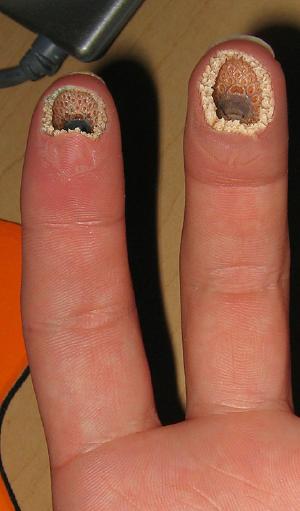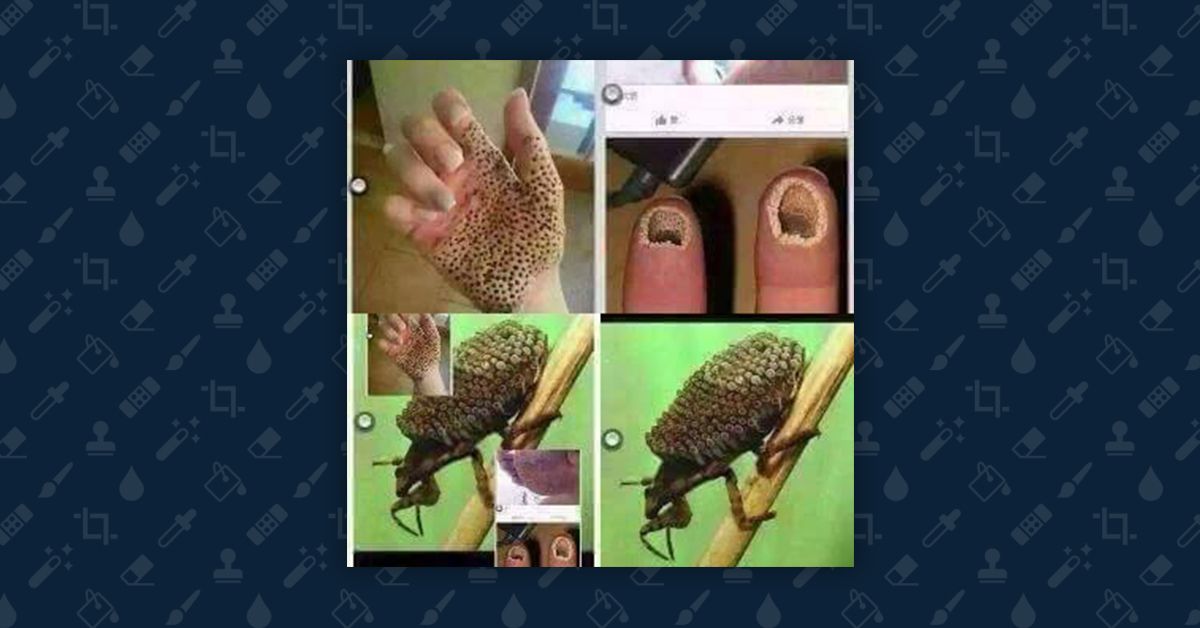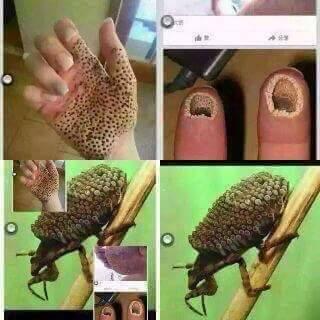In January 2016, social media users began encountering an item warning that a "new killer insect" sighted in India harbored a virus spread through touch that was able to "circulate [throughout] the entire human system in minutes." The insect and the deleterious effects of its virus were graphically shown in accompanying images, the latter of which were depicted in a hand with a large number of small holes throughout the palm and fingers:
New Killer Insect (See Photo)
If you ever see this Insect, please don't try to kill it with your bare hands or touch it, this insect spreads virus to the place of bodily contact and circulates the entire human system in minutes, it was first sighted in India.
Be kind enough to forward this information to be families and friends, do remember to educate the children never to kill an insect with bare hands or allow its secretion to touch their body.
This is an SOS Alert!!!!
Please Share.
There was nothing to this warning, however. These images were fabricated ones that combined elements from two separate and disparate life forms to produce a visceral response is viewers, famously exemplified by a supposed photograph of a breast rash caused by South American larvae that was actually a melding of a picture of a human breast with an image of a lotus seed pod:

The image of the allegedly virus-infected fingertips seen in the upper right-hand corner above is actually one that has long circulated online as an example of the effects of excessive computer use and was created by merging a photograph of fingers with images of lamprey mouths:

The "insect" pictured here, at least, is real. It's a giant water bug, a creature that is found in North America, South Africa, and India and is harmless to humans.
These types of faked images are sometimes claimed to play on viewers who have trypophobia, defined as a "pathological fear of holes" (particularly irregular patterns of holes). Although many people claim to experience this disorder, it is not covered in scientific literature or listed in the Diagnostic and Statistical Manual of Mental Disorders:
On Web sites and blogs, self-diagnosed trypophobes share tales of vomiting, sleep loss and anxiety attacks at the sight of such objects as honeycombs and rotting wood. They say the fears are haunting and disruptive of their daily lives.
But the medical world hasn’t yet embraced the phobia as real. Trypophobia isn't listed in any major dictionary or in the Diagnostic and Statistical Manual of Mental Disorders. Attempts to add trypophobia to the Oxford English Dictionary and even to establish a Wikipedia page have been rebuffed because there hasn’t been any research published on the subject. A Wikipedia editor who deleted an entry on trypophobia in 2009 noted that trypophobia is "likely hoax and borderline patent nonsense."
The afflicted hand seen in the upper left-hand corner of the above example is similar to an effect helpfully documented in a video showing how to produce a scary-looking hand that will vex trypophobes:


